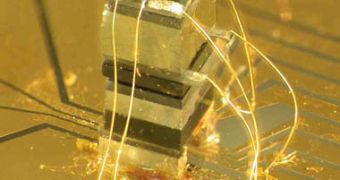Intel has already been taking advantage of the brand-new 45-nanometer family of Penryns for some time, yet AMD missed the train, since all their competitive products are handicapped and had to be pulled off the shelves. There's always a second chance and the only thing the company should focus on is the next-generation of processors.
According to AMD's Mario Rivas, the bug affecting the K10 technology started as a simple observation, but then quickly degenerated into a serious issue about to completely cripple the processors. The patches issued by AMD solve the L3 shortcoming, with a 90 percent success rate but at a great performance compromise. Rivas is confident about the company eventually being able to fix them: "We have 45nm on the way. We will have initial samples also in January. I'm fairly confident that those puppies are going to boot, and then we can have a follow-up conference call and I'll tell you, 'The sucker is booting'".
Rivas refers to booting because a new CPU is successful only when it loads the operating system. With Intel, things were a lot easier and Penryn was able to load Windows XP at first attempt. The processor was sent to mass-manufacture in less than a year.
AMD is not only working on fixing the 45-nanometer processor lines. John Pellerin, director of logic technology and development, says that AMD will increase the production of 45nm high-k dielectric chips in the first half of 2008. The next step for the company is switching to the 32nm high-k production, since the new technology is already under development. The 45-nanometer incident is a tough lesson and AMD is willing to learn from this year's mistake.
"We also have 32nm advance work in SRAMs, which as you know is the initial step. So we will be a fast follower again, and as long as we have architectural advantage, our 45nm will be as good as the other guy's 32nm", concluded Rivas.
As for rival Intel, they have announced their 32-nanometer test shuttle back in September 2007 and if AMD masters the 32-nm process too there will be a tight battle on who will be able to release a 32-nm processor first.

 14 DAY TRIAL //
14 DAY TRIAL //